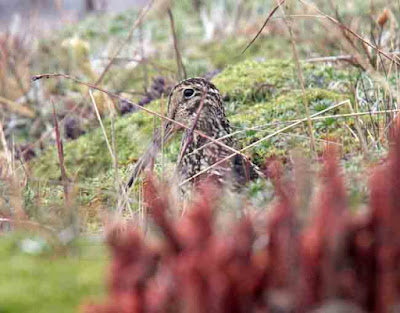Shiripuno Lodge in Amazon (SH)
Archidona a town on the east slope (AR)
San Isidro Lodge at a higher elevation on east slope (SI)
Guango Lodge even higher on east slope (GU)
Antisana reserve on the paramo (AN)
Mindo area on west slope has several close reserves that we visited (MI)
I think the most amazing development in neotropical birding in the past 20 years was the ability to attract antpittas to feeders. When I went on several trips in the 90s, antpittas were shy retiring birds that might come close with a played tape, but they always were skittish when they saw people, and I never saw a single one.
Well progress occurred when someone discovered that they could be attracted with earthworms and a lot of patience. Now many locations have an antpitta that will come to a location each morning when called and chopped worms are provided. The fortunate birders just have to stand quietly and watch and photo them. But they are in the wide open and close (20 feet away). However, it is a labor of love to train the antpitta. At San Isidro lodge, they said it took 8 months before the bird came reliably every morning.
I got photos of 5 species on this trip, 4 of them were at feeders. The absolute highlight is the 9.5" Giant Antpitta (Grallaria gigantea). Antpittas are long-legged almost tailless birds. This one is dark brown with black streaking on the breast. The guide book lists this bird as rare. The man whose place we visited calls the bird Maria and it took about 20 minutes of him calling before the bird showed up. MI
 |
| Giant Antpitta |
 |
| Yellow-breasted Antpitta |
At San Isidro Lodge, the local bird is the 6.75" White-bellied Antpitta (Grallaria hypoleuca).
 |
| White-bellied Antpitta |
 |
| Chestnut-crowned Antpitta |
 |
| Tawny Antpitta |
 |
| Amazonian Streaked-Antwren - male |
Several cool looking woodpeckers were found on the trip as well. The 10" Crimson-mantled Woodpecker (Colaptes rivolii) is mostly has mostly red upperparts and yellow underparts. The is a female with the black crown. GU
 |
| Crimson-mantled Woodpecker - female |
 |
| Spot-breasted Woodpecker - female |
The 8" Cinnamon Woodpecker (Celeus loricatus) had been photographed before but this one was much closer. This is a male with the red patch on the throat. MI
 |
| Cinnamon Woodpecker - male |
The campephilus genus are the largest woodpeckers. There was only one in North America, the extinct Ivory-billed woodpecker. I got 2 new species on this trip. The 13.5" male Guayquil Woodpecker (Campephilus guayaquilensis) has a red head and large crest. MI
 |
| Guayaquil Woodpecker - male |
The female 14" Powerful Woodpecker (Campephilus pollens) has a black crest. The male would have a red crest. SI
 |
| Powerful Woodpecker - female |
Happy birding and photography,
David McDonald
dkmmdpa@gmail.com
photos copyright 2006 - 2016 David McDonald
To have these trip reports sent to your email, please email me at the above address and ask to subscribe.
David McDonald
dkmmdpa@gmail.com
photos copyright 2006 - 2016 David McDonald
To have these trip reports sent to your email, please email me at the above address and ask to subscribe.

































